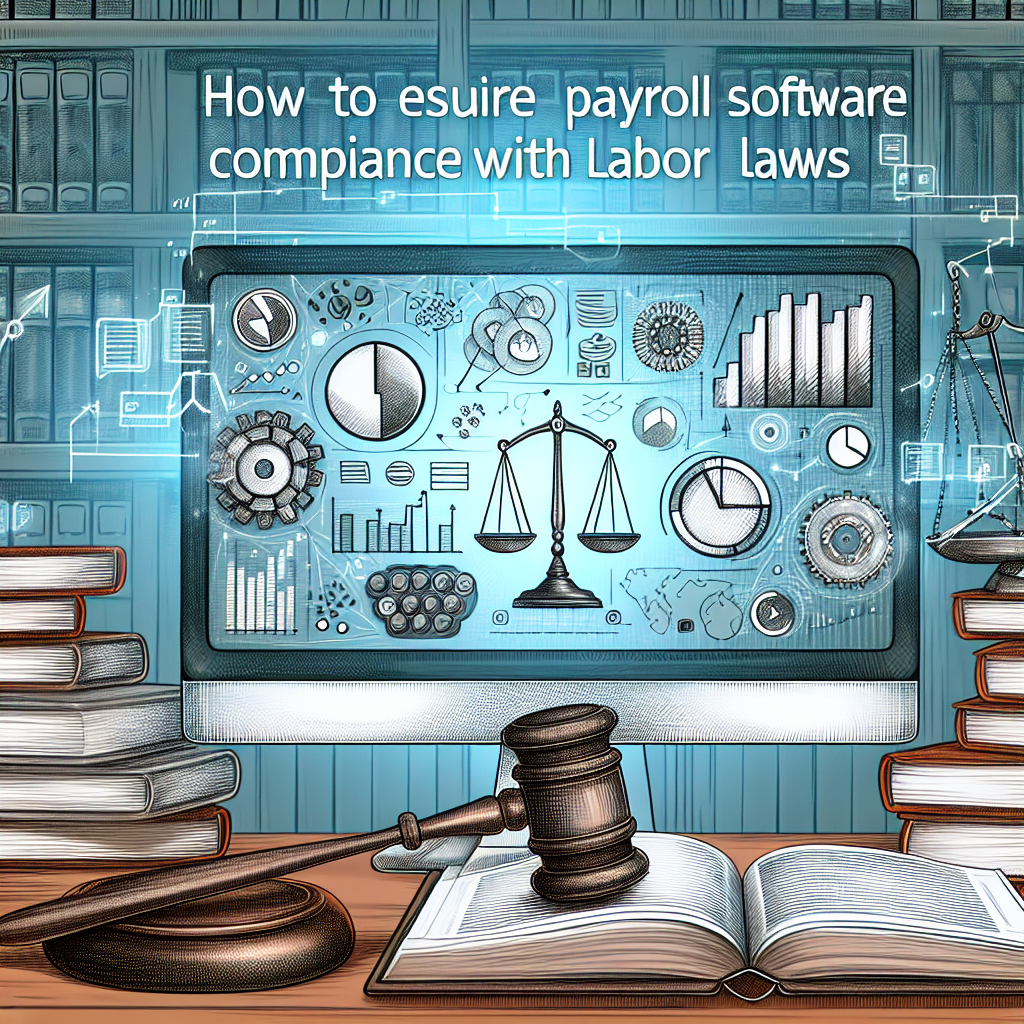Navigating the complex landscape of labor laws can be a daunting task for any business owner. With federal, state, and local regulations continuously evolving, staying compliant is critical—not just for legal protection but also for ensuring your employees feel valued and respected. One of the most effective tools for achieving compliance is payroll software. In this article, we’ll explore how to ensure your payroll software aligns with labor laws, helping you maintain smooth operations and a harmonious workplace.
Understanding Labor Laws: A Brief Overview
Before diving into the specifics of payroll software compliance, it’s essential to understand labor laws’ fundamental components. These laws govern employee rights, wage and hour regulations, benefits, and workplace safety. Understanding the basics will empower you to leverage your payroll software effectively.
- Wage and Hour Laws: Regulations surrounding minimum wage, overtime pay, and record-keeping for employees.
- Employment Classification: Differentiating between employees and independent contractors.
- Tax Regulations: Guidelines concerning employee tax withholdings and employer contributions for social security and Medicare.
Choosing the Right Payroll Software: Key Features to Look For
Not all payroll software is created equal. To ensure compliance, choose software that includes essential features to help manage your payroll efficiently while adhering to labor laws. Here are some features to consider:
1. Automated Tax Compliance
Ensure that your payroll software provides automated tax calculations and updates on tax regulations. This feature can help mitigate errors, ensuring timely and accurate tax filings, thus avoiding penalties.
2. Employee Record Keeping
Payroll software should allow secure and organized storage of employee records. This includes timesheets, wage information, and any other documents required by labor laws to ensure compliance with record-keeping regulations.
3. Real-time Updates
Labor laws change frequently. Select payroll software that offers real-time updates and alerts about changes in federal, state, and local labor laws, ensuring that your payroll practices remain compliant.
4. Reporting and Analytics Tools
Comprehensive reporting tools can help you track compliance-related metrics, such as overtime hours and pay rates. This information can be invaluable during audits or when making strategic business decisions.
Regular Training and Updates: Empower Your Staff
Even the best payroll software is only as effective as the people using it. Regular training sessions are essential for keeping your HR and payroll staff up to date on labor laws and the software’s functionalities. This commitment to continuous education fosters a compliant and knowledgeable workplace.
Engaging Employees in the Process
Don’t overlook the importance of engaging your employees in understanding their rights and responsibilities under labor laws. Providing resources and facilitating open discussions can empower them and reduce the likelihood of compliance issues arising from misunderstandings.
Conducting Routine Audits: Spotting Issues Early
Compliance is not a one-time task; it’s an ongoing process. Scheduling regular payroll audits can help you identify compliance issues before they turn into legal problems. Here’s how to conduct a thorough audit:
-
Review Employee Classifications: Ensure employees are correctly classified according to their roles and responsibilities.
-
Check Payroll Records: Verify that all records align with labor laws and reflect accurate wage payments and hours worked.
- Assess Software Updates: Confirm that your payroll software is updated with the latest regulations. Outdated software can lead to costly errors.
Building a Culture of Compliance
Creating a culture of compliance within your organization is vital. When employees understand the importance of following labor laws, they become more invested in maintaining a fair and compliant workplace. To foster this culture:
-
Encourage Open Communication: Promote a workplace environment where employees feel comfortable discussing their concerns and asking questions.
- Recognize Compliance Efforts: Acknowledge and reward teams or individuals who demonstrate diligence in following labor laws. This recognition can boost morale and motivation in maintaining compliance.
Conclusion: Invest in Compliance for Long-Term Success
Ensuring payroll software compliance with labor laws may seem challenging, but with the right tools and practices, you can simplify the process. By choosing the correct software, facilitating regular training, conducting audits, and nurturing a culture of compliance, your organization will not only meet legal requirements but also cultivate a more engaged and satisfied workforce.
Investing in proper compliance not only protects your business from potential legal repercussions but also demonstrates a commitment to your employees’ rights and welfare. In a competitive market, compliant practices can set your business apart as an employer of choice. Prioritize compliance in your payroll processes—and reap the benefits of a happier and more productive workplace.


